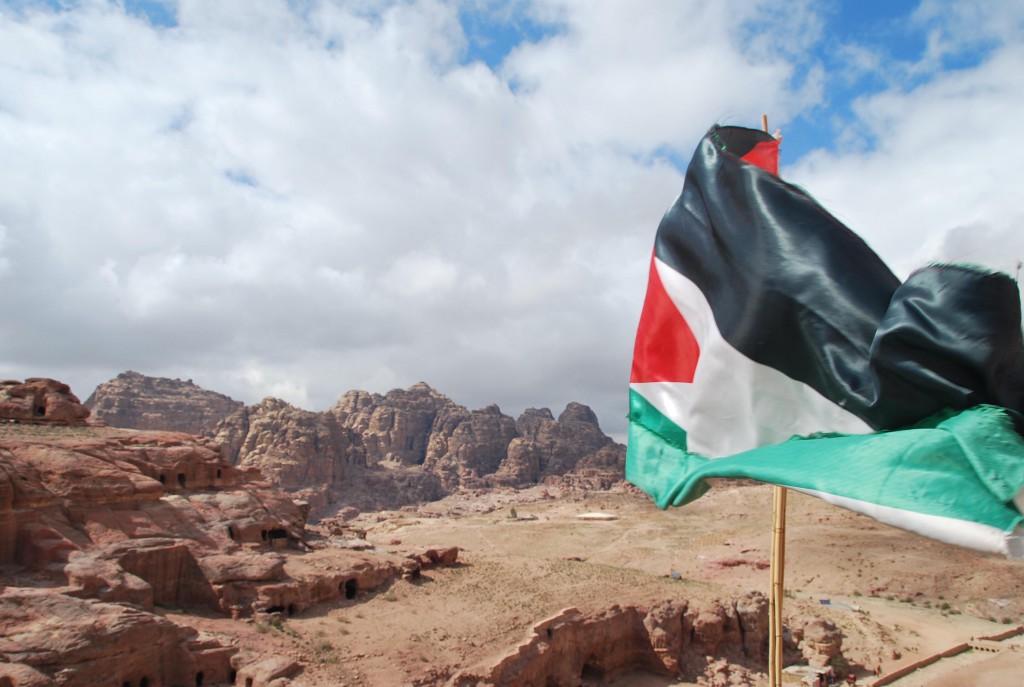Half built, half excavated, Petra is one of the oldest cities in the world.
A visit to Jordan isn’t complete without exploring the city that was lost until 1812 when Swiss explorer Johann Ludwig Burckhardt disguised himself as a Bedouin to infiltrate the mysterious site and then reveal it to the world.

Sandstone soliloquy
Located between the Red Sea and the Dead Sea, Petra was once a city that linked trade and culture between Phoenicia, Egypt and greater Arabia. Locked in by mountains and accessible though narrow passages and gorges, it is one of the world’s most famous archaeological sites.

Petra reveals itself as visitors travel through the main entrance known as The Siq.

Narrowing to only 3m in width in places, The Siq is a geological miracle that ends when it opens on to the famous and iconic Treasury.
 It’s said that the best time to experience Petra is at dawn when the site is still and empty of tourists – that means arriving before 6am and climbing to the best vantage points.
It’s said that the best time to experience Petra is at dawn when the site is still and empty of tourists – that means arriving before 6am and climbing to the best vantage points.

The entire site of Petra covers over 60-square kilometres. Most visitors wishing to explore all sectors use the guided camel tours by locals as part of their experience of Petra.

Petra, from the Greek word ‘petros’ meaning stone, or rock, is said to have over one thousand distinct colours and hues within its walls.

Although it looks exactly like a Roman creation, local tribes of Nabataens carved into the solid rock over 2,000 years ago to create the magnificent amphitheatre.
 ‘Ad Deir’ is the Arabic name for The Monastery, though to be built (and dug) sometime after the 3rd century as a Nabataen tomb then later used as a Christian church during the Byzantine era.
‘Ad Deir’ is the Arabic name for The Monastery, though to be built (and dug) sometime after the 3rd century as a Nabataen tomb then later used as a Christian church during the Byzantine era.

The Obelisk Tombs were built to host annual feast to commemorate the dead.

Unlocking Petra
The eroded statues once bore witness to Petra’s golden age. While wind and rain have damaged their former glory, their existence lends valuable information to archaeologists in their understanding of Petra’s long history.
 The Colonnaded Street was probably once the shopping heart of Petra. Traders and customers gathered here to buy, barter, and transact – it was a major centre of commerce in the region.
The Colonnaded Street was probably once the shopping heart of Petra. Traders and customers gathered here to buy, barter, and transact – it was a major centre of commerce in the region.
 Petra is not only an essential national monument of Jordan, but it also contributes a sizeable portion to the economy as a tourist attraction. Described by UNESCO as “One of the most precious cultural properties of man’s cultural heritage,” Petra has been a World Heritage Site since 1985.
Petra is not only an essential national monument of Jordan, but it also contributes a sizeable portion to the economy as a tourist attraction. Described by UNESCO as “One of the most precious cultural properties of man’s cultural heritage,” Petra has been a World Heritage Site since 1985.
photos © Mia S. All rights reserved.








